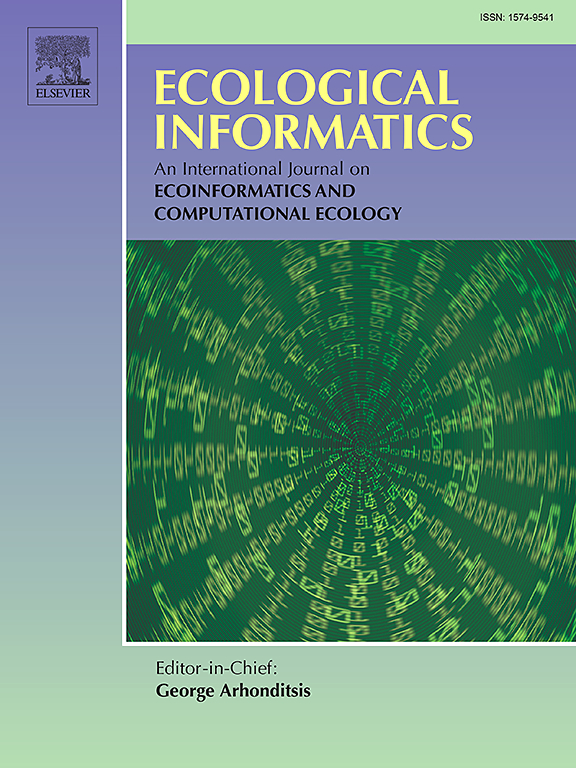预测气候变化对埃塞俄比亚西南部选定地区阿拉比卡咖啡分布影响的局地尺度分析:未来的生产区是否具有商业可行性?
IF 7.3
2区 环境科学与生态学
Q1 ECOLOGY
引用次数: 0
摘要
气候变化正在重塑全球咖啡生产的地理分布,影响咖啡农的生计和国际咖啡市场。在地方层面上理解这些变化对于设计有效的适应和政策规划至关重要。本研究评估了埃塞俄比亚西南部五个主要咖啡种植区的气候变化对咖啡种植适宜性的局地(区)影响,以及未来生产地理位置与森林覆盖的交叉关系。该研究使用三种机器学习算法(Maxent、SVM和RF)对咖啡分布进行建模,以预测当前和2030年代、2050年代、2070年代和2090年代在SSP2-4.5和SSP5-8.5情景下的合适区域。该模型对Ale、Goma、Gera和Yayu的AUC值为>;0.96, Limu Seka的AUC值为>; 0.86。降雨量和温度变量是预测咖啡区适宜性的最重要因素。在SSP2-4.5情景下,该研究预测,到本世纪末,Ale(+ 19%)、Gera(+ 41%)、Goma(+ 4%)、Limu Seka(+ 124%)和Yayu(+ 21%)的适宜区域总体上将增加,而目前大多数产区仍然适宜。然而,在SSP5-8.5情景中,我们预计Ale(+ 16%)、Gera(+ 52%)、Limu Seka(+ 71%)的适宜面积将增加,而Goma(- 0.5%)和Yayu(- 47%)的适宜面积将增加。问题是,预计的合适咖啡生产地点与目前在2020年全球森林覆盖地图上被指定为森林的地区重叠了25%至90%,根据EUDR 2023/1115法规的规定,这些地区的生产可能会被禁止出口到欧盟。因此,我们得出结论,该地区许多适合种植咖啡的地区可能在商业上不可行。咖啡适宜性的主要本地驱动因素的异质性意味着气候变化对咖啡生产影响的微观空间分析可以为其他地区制定有针对性和有效的气候适应战略提供有价值的见解。本文章由计算机程序翻译,如有差异,请以英文原文为准。
Local-scale analysis of projected climate change impact on Arabica coffee distribution in selected districts of southwestern Ethiopia: Are the future production areas commercially viable?
Climate change is reshaping the geographies of coffee production globally, impacting the livelihoods of coffee farmers and the international coffee market. A local-scale understanding of these shifts is essential for designing effective adaptation and policy planning. This study assessed the local-scale (district-level) impact of projected climate change on coffee area suitability and how future production geographies intersect with the forest cover in five major coffee-growing districts of southwestern Ethiopia. The study models coffee distribution using an ensemble of three machine-learning algorithms (Maxent, SVM, and RF) to predict suitable areas presently and in the 2030s, 2050s, 2070s, and 2090s under SSP2–4.5 and SSP5–8.5 scenarios. The models perform well in predicting suitable areas with an AUC value of >0.96 for Ale, Goma, Gera, and Yayu and > 0.86 for Limu Seka. Rainfall and temperature variables are the most important factors for predicting coffee area suitability. Under the SSP2–4.5 scenario, the study predicts an overall increase in suitable areas in Ale (+19 %), Gera (+41 %), Goma (+4 %), Limu Seka (+124 %), and Yayu (+21 %) at the end of the century, while most current production areas remain suitable. In the SSP5–8.5 scenario, however, we expect suitable areas to increase in Ale (+16 %), Gera (+52 %), Limu Seka (+71 %), and losses in Goma (−0.5 %), and Yayu (−47 %). Problematically, projected suitable coffee production sites overlap by 25 % to 90 % with areas currently designated as forest under the Global Forest Cover 2020 map, potentially placing production in those areas off limits for export to the European Union under the provisions of the EUDR 2023/1115 regulation. We therefore conclude that many areas in the region that could become newly suitable for coffee production may not be commercially viable. The heterogeneity of primary local drivers of coffee suitability means that micro-scale spatial analyses of climate change impacts on coffee production could provide valuable insights for other regions in planning targeted and effective climate adaptation strategies.
求助全文
通过发布文献求助,成功后即可免费获取论文全文。
去求助
来源期刊

Ecological Informatics
环境科学-生态学
CiteScore
8.30
自引率
11.80%
发文量
346
审稿时长
46 days
期刊介绍:
The journal Ecological Informatics is devoted to the publication of high quality, peer-reviewed articles on all aspects of computational ecology, data science and biogeography. The scope of the journal takes into account the data-intensive nature of ecology, the growing capacity of information technology to access, harness and leverage complex data as well as the critical need for informing sustainable management in view of global environmental and climate change.
The nature of the journal is interdisciplinary at the crossover between ecology and informatics. It focuses on novel concepts and techniques for image- and genome-based monitoring and interpretation, sensor- and multimedia-based data acquisition, internet-based data archiving and sharing, data assimilation, modelling and prediction of ecological data.
 求助内容:
求助内容: 应助结果提醒方式:
应助结果提醒方式:


